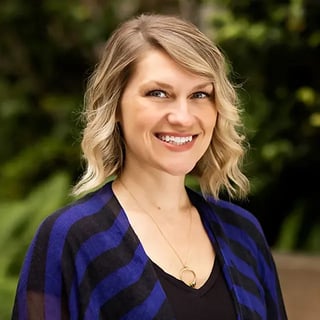This series highlights members of the GEDC community who are clinical champions for older adults in the emergency department.
Dr. Nida Degesys is the Age-Friendly Emergency Department Medical Director at the University of California San Francisco (UCSF), the first hospital in the Bay Area to be designated a Level 1 geriatric emergency department. Patients 65 years and older or any age with dementia are eligible to be assessed by UCSF’s geriatric-focused AFED team, including doctors, nurse practitioners, pharmacists and social workers.
Degesys is an emergency care physician who specializes in the needs of older cognitively impaired adults when seen in the emergency department. In research, Degesys’ main focus is geriatric emergency medicine.
In 2023, she received an award for early career achievement from the Academy of Geriatric Emergency Medicine and the National Emergency Medicine Junior Faculty Teaching Award from the American College of Emergency Physicians.
Today for our newsletter, Degesys explores concrete steps EDs can take to make meaningful change for geriatric patients and improve their healthcare experience.
As an emergency physician, I am a pragmatist. I need concrete steps that my emergency department can follow to improve care for our patients.
When it comes to caring for geriatric patients in the ED, there are several changes we can make – some of them are straightforward, while others require additional resources – to ensure these patients receive the best care. Take, for example, patients with dementia or cognitive impairment. How can we adapt our approach to improve their experience?
Let’s divide these changes and ideas into three different buckets: low-hanging fruit (easy to implement), moderate/intermediate changes that don’t require much funding, and initiatives that can create big changes with the right resources.
All of these solutions can help make meaningful change for older patients.
Low-hanging Fruit
- No Auto NPO. The standard operating procedure for many EDs is that every patient who comes in is NPO (no food or drink). That shouldn’t necessarily be the case, because many of these patients won’t be undergoing an emergency procedure in the next few hours. Instead, consider letting patients not destined for surgery order food and water, as it can change the entire patient trajectory, improve their nutritional and mental status, and reduce delirium.
- Activity Carts. A growing trend in hospitals and EDs, activity carts are packed with activity books, stackers, stuffed animals, puzzle books, magazines, fidget spinners and more. These simple activities are meant to keep people engaged in an often windowless environment. Items from an activity cart can comfort
Music. Consider incorporating music into the patient experience, as music can decrease agitation and anxiety of patients and care partners alike. You can play music on the phone or iPad, although simplified music players for Alzheimer’s and dementia patients are also helpful. Ask your patient what kind of music they like and consider what may have been playing when they were in their teens and twenties – music from our younger days can be very therapeutic.

Moderate Steps to Take
- Responding to “Agitation.” There are often multiple underlying causes behind a geriatric patient’s “agitated” behaviors, but agitation itself is rarely the true problem. Implement a new approach for how you actually handle and respond to patients who have “agitated” behaviors, such as pacing, pulling at lines, walking out of the room or persistently asking the same question. Try to identify why the patient is exhibiting a certain behavior. Are they in pain? Are they thirsty? Are they confused?
- Timely Screenings. How do we make sure we screen patients for frailty in a timely way? I could write a whole story on screening tools that are available – we’ve tried a lot of them in our ED. Ultimately, we came up with a simple yes/no question for triage nurses: Do you think this patient is frail in function, cognition, or social connectedness? Those at risk then receive additional screening for delirium, dementia, nutrition, and other conditions that fit age-friendly hospital measures.
High-Level Initiatives
- Specialized, Focused Memory Care. At UCSF, we are very fortunate to have access to our memory aging center. Our team has collaborated closely with their leadership to establish a referral process for patients who, after evaluation in our ED, show concerning signs of memory loss or possible dementia.Being able to refer these patients to our memory aging center is a huge win for us, but not everyone has access to such a center.
Takeaways:
- If you have access to a memory or aging center, work with them to create a referral pathway.
- Implement the low-hanging fruit in your ED.
- Reduce restraint use and try to find the reason for certain behaviors.
Dr. Degesys will present as part of the 14th GED Healthcare Systems Roundtable, “Transforming EDs for Persons Living with Dementia and their Care Partners.” Set for June 24, this event is available exclusively for roundtable members. For information about enrolling your health system, reach out to the GEDC team.
